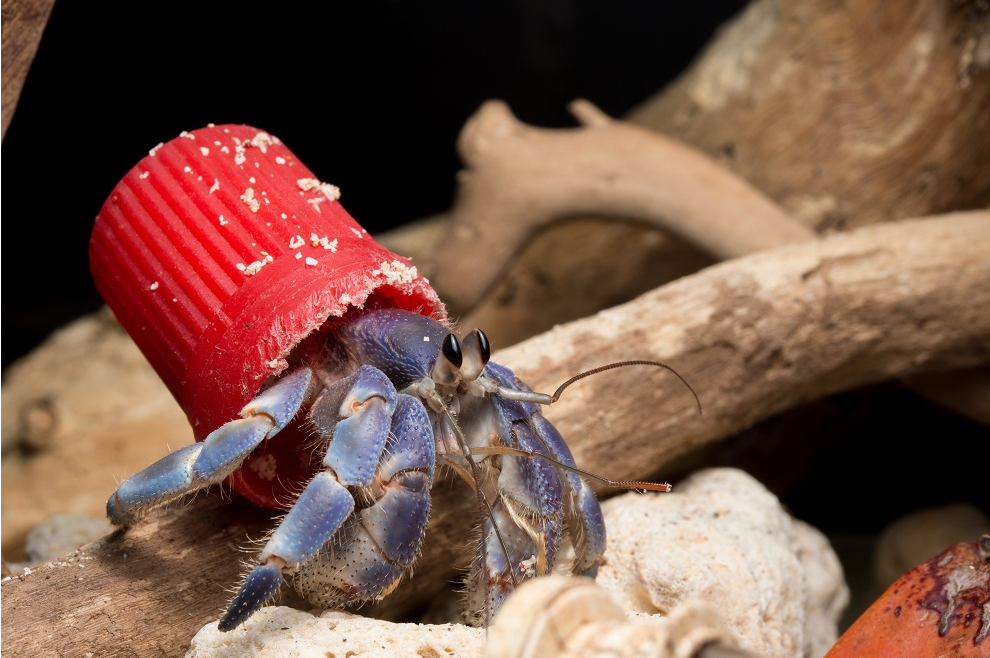A responsible approach to production, consumer awareness, and scientific initiatives play crucial roles in minimizing the impact of synthetic materials on the environment

Contemporary synthetic materials, despite their advantages, also have certain drawbacks. Their low weight, ease of processing, favorable cost, and the possibility of recycling make them widely used in various industries. However, a key aspect is the responsible approach to production, which minimizes the negative impact on the natural environment through multiple processing and proper disposal.

A hermit crab in an “artificial” shell. Photo: Shawn Miller/Okinawa Nature Photography Close
Unconscious use of synthetic materials, however, can lead to environmental pollution. In this context, consumer behavior plays a crucial role. Conscious decisions regarding consumption, plastic reduction, support for recycling, and promotion of practices that reduce microplastic emissions are essential for environmental protection.
It is worth emphasizing that further research on the impact of microplastics on human health and the environment is necessary to better understand this issue, which is still partially a mystery to us. An example of an initiative aimed at addressing the issue of lake water pollution, especially with microplastics, is the Interreg Baltic Sea Region Lakes Connect project. Its goal is to build a network of contacts between various institutions, including scientific ones, to effectively address problems related to lake water pollution, especially in the context of tourist use of lakes. Together with partners from Lithuania, Latvia, and Poland, this project seeks to find solutions that minimize the impact of tourism on lake cleanliness.
Referring to current research, scientists from the University of Warsaw and the University of Life Sciences in Poznań have discovered new behavior in hermit crabs. It turns out that these creatures have started using plastic found on beaches and in water instead of traditional shells to protect their soft abdomens. The study’s authors applied innovative methods related to iEcology (internet ecology), through which they identified 386 individuals using synthetic shells, mainly plastic caps. Interestingly, it was found that 10 out of 16 land hermit crab species worldwide, in all tropical regions of the Earth, use this type of shelter. The entire study has been published in the journal “Science of the Total Environment” and is available at this link: link.
Source: www.uw.edu.pl
